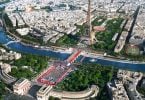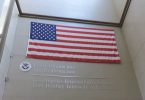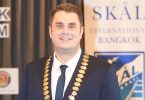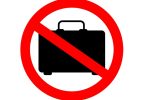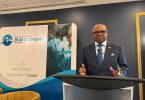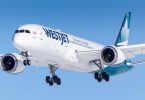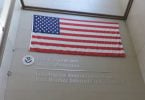KUALA LUMPUR, Malaysia (eTN) – As world aviation enters shaky times with jumping fuel prices, many airlines start to struggle and cut back on capacities, eliminating routes with weaker yields or the ones requiring high fuel consumption such as non-stop flights between Asia and New York. Tony Fernandes, CEO of Asia’s largest low cost airline AirAsia, highlights his very different approach to cope with the current crisis.
How fuel is affecting your strategy?
Tony Fernandes: Fuel is becoming a massive problem as it went up from US$36 in 2003 to over US$170 for jet fuel today. And they are only two ways to deal with this burden to cut costs. The first, chosen by many airlines, is to reduce the network and adapt capacities. It works but it will also affect considerably travel patterns and could lead to a cycle of further route network’s adjustment… The other way is still to grow up. This is the way AirAsia choose. We have to fill up aircraft as more passengers are the best way to compensate for the burden of high fuel prices. We will also continue to look at ways to reduce our costs.
This means: no cut in your network, including domestic routes?
Fernandes: That is correct. More revenues can make up for the deficit we could record because of the fuel crisis. In fact, I speed up the opening of new routes. We will out of Malaysia open between June and July up to four new lines: Kuala Lumpur-Haikou in China, Kuala Lumpur to Balikpapan and Makassar in Indonesia and Kuala Lumpur-Kuantan. The latter is probably our shortest route in our network but domestic routes help to also feed our international connections. We also look at new routes in Vietnam.
Does it then mean that AirAsia low cost model turn its back from traditional point-to-point markets?
Fernandes: We have seen indeed an increasing number of passengers in transit at our main bases. We are for example the largest carrier to Indonesia now, flying to more destinations than Singapore Airlines and its subsidiaries. A lot of people take advantage of this positioning. I anticipate a further development of our transfer activity in the future.
Will you increase fuel surcharges?
Fernandes: We try not to pass the burden to consumers with additional fuel surcharges. We rather look at other ways such as paying a minimal fee to use our various services. We recently introduced fees for check-in luggage for example. We will also offer more ground services soon such as priority check-in with dedicated counters at Kuala Lumpur airport, against an additional fee of course!
How about your environmental credential? AirAsia seems to be far behind other airlines in terms of initiatives such as carbon footprint compensation…
Fernandes: Asia is generally behind developed nations in Europe, America or the Pacific. Our best contribution to saving the environment is our fleet. It one of the youngest in the world and is extremely fuel-efficient as we put more seat per aircraft than most or our competitors. We also try to accelerate the replacement of our ageing Boeing 737-300 by more fuel-efficient Airbus A320. However, we are looking now to introduce a scheme for carbon dioxide (CO²) footprint compensation. We look at ways to see how this CO² credit would be at best used. I expect that we could come up with some program by early 2009.
Any plan for other subsidiaries? How about your previous idea of an airline in India or China?
Fernandes: We do not have such plans anymore as we want to concentrate our effort into ASEAN markets. We are seriously looking at the Philippines, which is a high potential market with its 70 million inhabitants. In Vietnam, we do have a joint venture but we face pressure from established carriers, which block our entry into this rapidly expanding market. I am confident we will still get into Vietnam in a near future. AirAsia wants to maintain its lead as the first truly pan-ASEAN airline.






